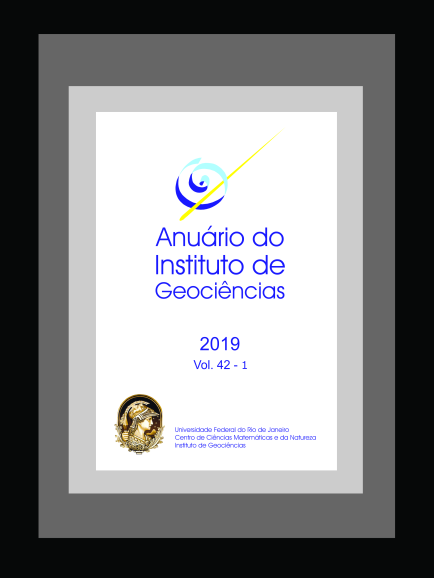Multidecadal Cycles Study in the Climate Indexes Series Using Wavelet Analysis in North/Northeast Brazil
DOI:
https://doi.org/10.11137/2019_1_66_73Keywords:
Time-series analysis, Decadal to multidecadal cycles, Wavelet analysisAbstract
This study investigates the climatic indexes time series, with a period of the most recent 80 years, with monthly mean values, using the Pacific Decadal Oscillation Index (PDO), Southern Oscillation Index (SOI), and the monthly solar activity time series with the sunspots number (MS), obtained from the National Weather Service’s website - Climate Prediction Center and Sunspot data from the World Data Center SILSO, Royal Observatory of Belgium, Brussels. The statistical software R was used with the WaveletComp package to generate the Morlet wavelet power spectra, bivariate analysis with cross-wavelet and the biwavelet package. As a result, predominant cycles were obtained and order variabilities of 32, 64, 128 and 256 months were observed, with approximately 2.66, 5.33, 10.66 and 21.33 years. These frequencies are observed in the variability of the period from January 1933 to September 2016, in the total of 993 months (82.75 years), characterizing decadal variations for multidecadal. These observed multidecadal cycles (of the order of 10.66 and 21.33 years may show a degree of association with the variability of solar activity (Sunspot) with the climatic variability cycles in the Atmospheric/Ocean system. Data from total rainfall from January 1951 to September 2017 were analyzed information located at Belem, São Luiz, Fortaleza, Natal and Fernando de Noronha airports, characterizing a diagonal from the north to the Brazilian northeast, observing that these series show similarity in the decadal and multidecadal cycles found in the SOI/PDO and Sunspot series.Downloads
Download data is not yet available.
Downloads
Published
2019-12-01
How to Cite
Corrêa, C. S. (2019) “Multidecadal Cycles Study in the Climate Indexes Series Using Wavelet Analysis in North/Northeast Brazil”, Anuário do Instituto de Geociências. Rio de Janeiro, BR, 42(1), pp. 66–73. doi: 10.11137/2019_1_66_73.
Issue
Section
Article
License
This journal is licensed under a Creative Commons — Attribution 4.0 International — CC BY 4.0, which permits use, distribution and reproduction in any medium, provided the original work is properly cited.















